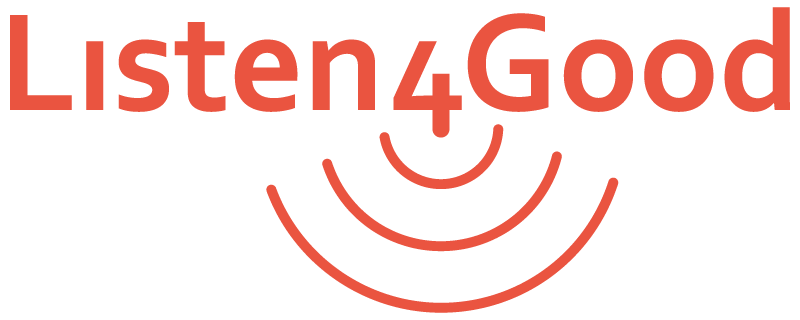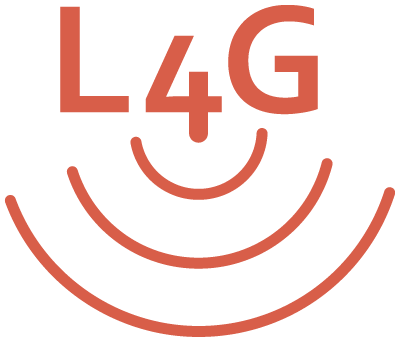Feedback Training | Listen4Good

Importance of Feedback Training: Why it Matters
Nonprofits know it is important to listen to their clients. As they grow, they also understand the importance of collecting data to measure progress against their mission and to report to their stakeholders.
As a result, organizations spend considerable internal time and energy creating surveys to collect data and client feedback. However, a DIY approach has its limitations.
As one program participant from a legal aid organization said,
“You can try to do it yourself, but you quickly learn that you are in over your head.”
Moreover, without support, feedback can often get ‘stuck’ in organizations – either not being effectively analyzed or never really informing programmatic or operational changes.
Thus, there is a clear benefit for nonprofits to seek out feedback training from professionals like Listen4Good to assist with survey design, analysis, and organizational change. Training can help take something that is ad-hoc, professionalize it and make it stick.
Organizations have found that receiving feedback training yields considerable benefits, leading to feedback practices that promote greater trust, more equitable client relationships, and real organizational change, with impact that can be seen and felt by everyone involved.
And meaningful change is at the heart of what Listen4Good is about.
Importance of Feedback
Structured feedback training can help organizations gather and respond to client feedback to help with internal decision-making, reporting to grantmakers, fundraising, and tracking equity goals.
By implementing a rigorous feedback system, organizations gain skills that allow them to sustain hiqh-quality feedback as a practice with those they serve. Ultimately, equitable feedback practices lay the groundwork for sustained shifts in how an organization listens to and shares decision-making power with its clients.
For now, let’s discuss a few pointers on how to work with feedback, especially what to do with it when you receive it given this is where internal systems can often break down.
Read and Listen to the Given Feedback
Client feedback can be given in many different ways, and it’s important to receive feedback effectively. Feedback can be shared verbally or in written form; it can be shared informally, or through a questionnaire or client survey.
No matter how the feedback is given, it’s important to listen carefully to what’s being communicated to you. You can be a great listener by doing the following:
- See from the Giver’s Point of View: Step into the shoes of the person giving you feedback and see things from their perspective. Work to understand their concerns, stress points, and problems they could be dealing with on their end. In doing so, you will likely realize they have areas of concern that you never anticipated.
- Don’t Interrupt: If the feedback is being given to you verbally, make sure you don’t interrupt the client. Give them time to lay out all their thoughts, even if the feedback is negative. Also be careful about your body language—your body language and tone of voice can make a stronger impression than your words. Avoid looking distracted, bored, or annoyed.
- Ask Questions: Ask clarification questions about anything you don’t understand. Asking questions also shows the person who’s giving you feedback that you are genuinely interested in hearing their thoughts.
Follow Up on Feedback
Following up on feedback is essential, whether it was given to you in person or through a survey. Following up shows your clients that you care about their thoughts, whether positive or negative, and that you understand and seek to be responsive to what they wish to communicate.
Clients might feel unmotivated to keep working with you if you don’t respond to feedback they’ve given, so validating their feedback is important, even when you feel that the feedback is challenging to respond to.
Have a Growth Mindset When You Are Receiving Feedback
As individuals, we love receiving positive feedback, but it’s more difficult to take feedback that’s negative. Every time you receive feedback from a client, see it as an opportunity to gain new perspectives, even if you may not agree with all of the ideas.
You might find that negative feedback is the most constructive and can help you improve your service delivery and the way you communicate with the clients you serve. In fact, at Listen4Good, we often hear that answers to the question, what can we do better, yield some of the most powerful nuggets.
At Listen4Good, we encourage candor from clients, and emphasize that negative feedback represents an organizational opportunity to grow.
In the words of one nonprofit CEO who participated in Listen4Good:
“Now we see criticism or negative feedback —bad grades — from the [clients], as normalized,” she says. “We are not defensive or surprised by it. We say, that is their experience. We listen, put it in context, and learn and improve from it.”
Act on the Feedback
After you’ve received and interpreted client feedback, find ways to act on the feedback–and let the client know that you’re implementing their suggestions. In some cases, it’s easy to act on the feedback that’s been given to you; what we like to “low-hanging fruit.”
In other cases, it might be difficult to respond, especially if it’s negative feedback that is vague or unsubstantiated by other data, or if you are not in a position to respond to the feedback due to resource constraints.
We find that it is helpful to directly communicate tangible changes that are being made to address clients’ feedback. This can be through a newsletter, posters, or announcements.
If you are not able to act on certain feedback, you can still acknowledge it and communicate why it is not being implemented. While it may disappoint some clients, it will reassure them that their feedback was heard and considered. Over time, you may also be able to use the feedback as ammunition for securing additional resources to address client priorities. In this way, feedback can inform internal budget prioritization as well as external fundraising or advocacy goals.
Feedback Resources
Would you like to improve the feedback process in your organization? Our online resources can help you get started. We have tools and frameworks that can help you make the most productive use of the feedback provided by your clients so you can deepen your relationships and continue to build trust.
Listen4Good also offers comprehensive feedback training programs for your organization that include 1:1 coaching, in-depth live webinars, a robust web app, access to a premium version of SurveyMonkey, and a vibrant peer community.
To learn more about our approach and our feedback loop process, please contact us, schedule a call with us or register for a free informational webinar today.

